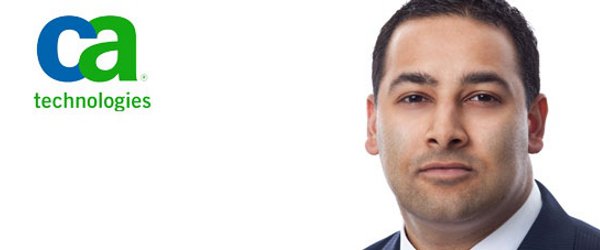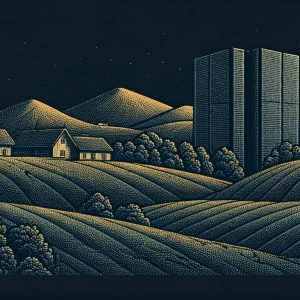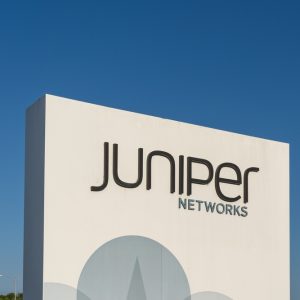
CA Technologies has its fingers in many technological pies. "We’re your heterogeneous vendor that can help you manage your environment and that goes across those different areas of security, management and monitoring," says CA’s Sid Kumar, head of Customer Lifecycle Solutions.
CA has an IT business management division, application delivery, application performance management software and its own security practice. "The theme across all these applications is monitor, manage and secure across different environments whether that’s application, infrastructure or cloud or mainframe environment," says Kumar.
It is of ever-increasing importance that businesses consider how to monitor and manage their applications. A total of 200 million tablets will be sold by the end of this year, and around half a billion applications have been written in the past two years. This creates a level of complexity in communication between devices. CA’s Layer 7 security programme for API’s plays right into that.
"The number of transactions that are occurring machine-to-machine had previously been consumer-to-machine. So there’s a whole notion of this API economy happening where a lot more transactions are automated though connection points through APIs, so how do you secure that tunnel?" poses Kumar.
"We’re in very early phases of the Internet of Things concept. If you think about smart cars, smart refrigerators, they’re all going to need to communicate back to some central console and those connections have to be managed and secured, which plays right into our sweet spot. We wanted to get right into that API economy."
CA Technologies recently acquired Layer 7 to provide further security and management technology to its customers utilizing API, complementing its Identity and Access Management suite, and offering DevOps solutions in the CA LISA Suite. The collaboration will help customers better secure and manage APIs and deliver the cloud, mobile and composite applications.
Kumar says: "We did an innovation study a year ago and CIOs are continually pressured on their budget. 10% is spent on innovation but 90% is trapped in keeping the lights on and running their day-to-day operations. If they want to be able to capitalise on trends like IoT, Big Data and mobility, which are increasingly being required by the business, they are really going to have to look under the covers and find our why they can’t get more out of their spending.
"A lot of it boils down to they are not being current on their releases, so they are waiting five, ten, fifteen years and the cost compounds. They are not getting value because they are not on the latest release and are now spending a lot of money to get off of it in a very hurried time frame. By managing that portfolio in a better way, they can start really being a business ally, rather than being viewed as a cost centre."
Kumar explains: "A lot of it is down to how well they manage the portfolio and proactively manage the portfolio to get more done and be viewed as business partners rather than cost centres.
"If you look at how customers are managing their IT portfolios, they are not doing a lot to ensure that they are running on the current versions of software," he said. If customers have not update for a decade, which Kumar stipulates is often the case, it’s a lot harder to skip the steps and come immediately up to date. It’s far easier to stay current, which is the underlying value of SAAS.
"The SAAS philosophy is you’re always current and you’re always on the latest release," says Kumar. "So noting that, there’s a lot of money spent and invested in CIOs on their enterprise software investments, and realizing that it’s not just like a Windows upgrade, these are big complex implementations that take up to 12 months at a time to go into production.
"So we tackle these head on by running these in parallels, helping them run over a phased period of time. It helps them to take that initial step and do it over time. It’s like ripping off a band aid, if you just take it off it will be fine," says Kumar.
"You constantly want to be looking at it as if it is your own money; you need to ask, ‘Am I getting the right level of risk and return for the money that I’m spending?’ You need the right mix and that’s what CA are helping our customers do, trying to take a pro-active thought leadership perspective.
"We discovered there’s an opportunity to help our customers really connect the past with the future and there’s too many prevailing thoughts in the industry when it comes to large on-premise software vendors, too many of them have large installed bases on premise and they want to go sell these new SAAS solutions, but you have to connect the past with the present and take the investment they have made with the on premise solution and take that forward," says Kumar.
As head of Customer Lifecycle Solutions, one of CA Technologies’ latest divisions, Kumar has made it CA’s mission is to work with customers that have already bought CA solutions and help them proactively manage their portfolios and their lifecycle. Kumar and his teem work with customers to understand their current business needs and look at how that will evolve over the coming years so they can make the right decision going forward.
"All too often there’s an inertia of not doing anything if you don’t have to. Then you find out when it’s too late. So we want to encourage customers to have this proactive view with this new group that we created about 18 months ago."
Kumar continues: "If the industry thinks of things as old versus new then it naturally implies rip and replace. So one thing we are very conscious about is changing the game on that side of it: rip and replace is a bad term, we don’t pitch that. That is the prevailing notion of take out what’s old and put in the new. The approach we’re taking is a softer approach that helps customers, in some cases, run two products in parallel."
Kumar explains this solution with the analogy of using two light bulbs. If you dim one light bulb slowly to turn it off (the mature technology) and the slowly turn the other one to turn it on (the new solution), for a time you will be relying on light from two light bulbs but you will not have a period of complete darkness.
"We let them integrate key components of this legacy of mature solutions with components of our next generation SAAS solutions, so it boils down to four things: firstly, is there value in the change, and then considering cost, risk and time."
If there is value and CIOs can find the balance between risk and reward for their spending and investing in new technologies, then they will more easily be able to remain competitive by embracing the latest technology.






